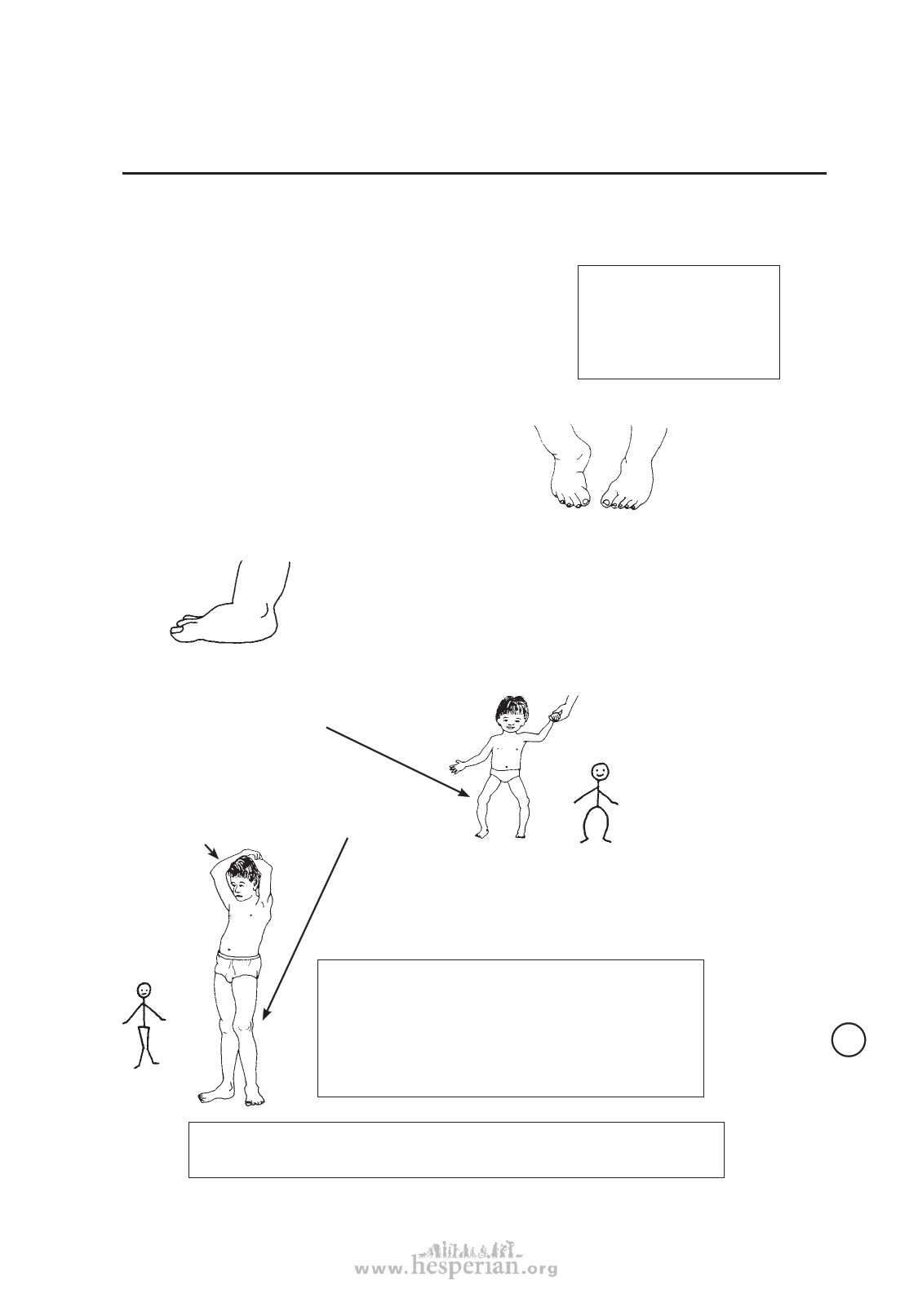
Club Feet, Flat Feet,
Bow Legs, and Knock-Knees
11CHAPTER
113
WHAT IS A DEFORMITY AND WHAT IS NORMAL?
Sometimes parents worry because they think
a part of their child’s body is abnormal or
deformed. But in small children, often what
seems unusual is within what is normal, and
will get better as the child grows. For this
reason, it is important to know what variations
are normal and which may be problems.
Note: For children
born with parts of
their bodies missing or
shortened, see Chapter
12 on birth defects.
1. Many children are born with their feet
somewhat bent or crooked. To learn
the difference between a normal bend
caused by the baby’s position in the womb,
and true club feet, see the next page.
CURVED FEET:
NORMAL
in the first
weeks or
months of life
‘FLAT’
FEET:
NORMAL
until
age 2
2. ‘Fat’ or ‘flat’?—When most babies
begin to walk, they walk on the insides
of their feet, with their legs wide apart.
Also their feet still have baby fat on the
bottom. As a result, the feet look very flat.
In nearly all cases, they will get better by
themselves. (See p. 117.)
3. A baby’s legs often bend outward
(‘bow legs’), like this.
This bending starts to
disappear at the age of 18
months. Then the legs slowly
straighten until they actually
bend inward a little, like this.
BOW LEGS:
NORMAL
until about
18 months
KNOCK-
KNEES:
NORMAL
between
2 and 12
years
4. This ‘knock-kneed’ position
generally develops around age 2.
By age 5 or 6 the knees begin to
straighten.
Note: Children with brain damage sometimes
develop a ‘knock-knee’ way of standing or
walking. If the child with knock-knees also
moves or walks in a stiff or jerky way, or shows
other problems, check for signs of brain damage.
(See p. 35 and Chapter 9 on cerebral palsy.)
IMPORTANT: In any child who develops bow legs or knock-knees,
check for signs of rickets and other problems. See Chapter 13.
CP